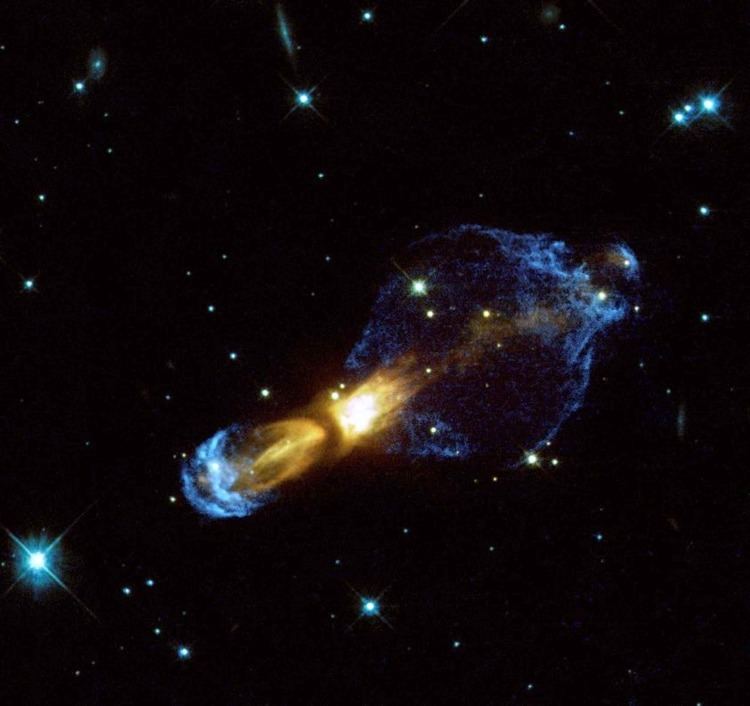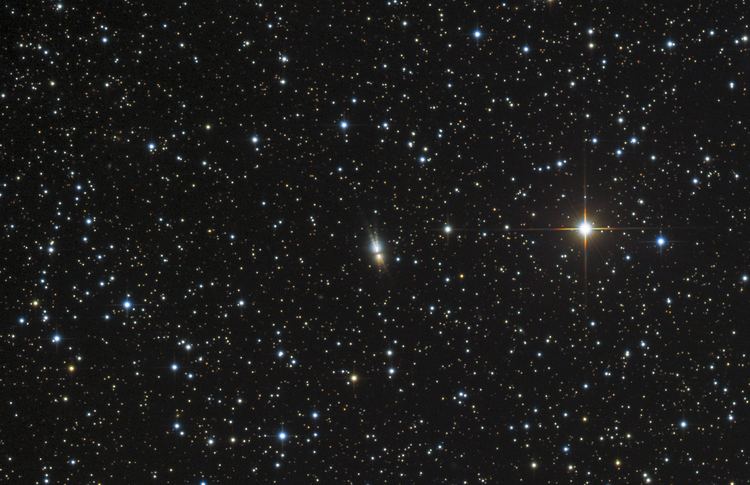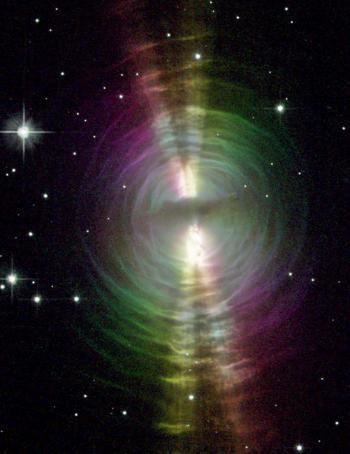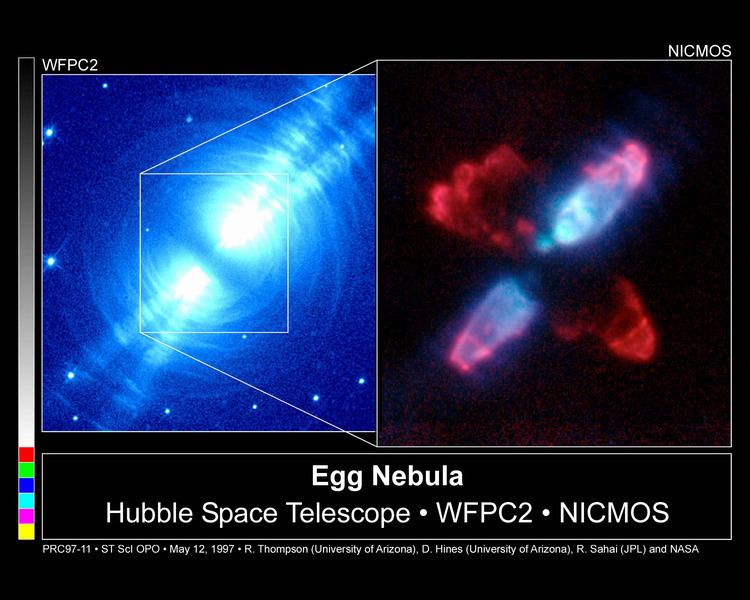Right ascension 21 02 18.75 Apparent dimensions (V) 30″ × 15″ Absolute magnitude (V) 4.2 | Declination +36° 41′ 37.8″ Radius 0.2 ly Magnitude 14 Apparent magnitude (V) 14 | |
 | ||
Distance approx 3000 ly (920 pc) Similar Calabash Nebula, Cat's Eye Nebula, Engraved Hourglass Nebula, NGC 7027, Westbrook Nebula | ||
Egg nebula deep sky videos
The Egg Nebula (also known as RAFGL 2688 and CRL 2688) is a bipolar protoplanetary nebula approximately 3,000 light-years away from Earth. Its peculiar properties were first described in 1975 using data from the 11 µm survey obtained with sounding rocket by Air Force Geophysical Laboratory (AFGL) in 1971 to 1974. (Previously, the object was catalogued by Fritz Zwicky as a pair of galaxies.)
Contents
The Egg Nebula's defining feature is the series of bright arcs and circles surrounding the central star. A dense layer of gas and dusts enshrouds the central star, blocking its direct light from our view. However, the light from the central star penetrates the thinner regions of this dusty enclosure, illuminating the outer layers of gas to create the arcs seen in this resplendent image (Hubble Site).
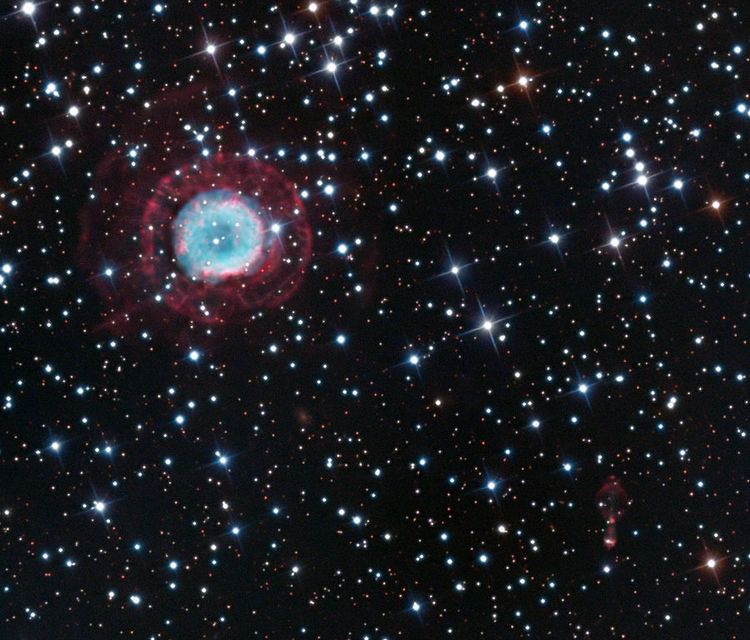
The dusty enclosure around the central star is very likely a disc. The bipolar outflows in the image indicate that the system has angular momentum, which is very likely generated by an accretion disc. In addition, a disc geometry would account for the varying thickness of the enclosure that allows light to escape along the disc's axis and illuminate the outer layers of gas, but still blocks it from our direct view along the disc edge. Although dusty discs have been confirmed around several post-AGB objects (S. De Ruyter et al., 2006), a disc around the Egg Nebula is yet to be confirmed.

The Egg Nebula was photographed by the Wide Field and Planetary Camera 2 of the NASA/ESA Hubble Space Telescope.
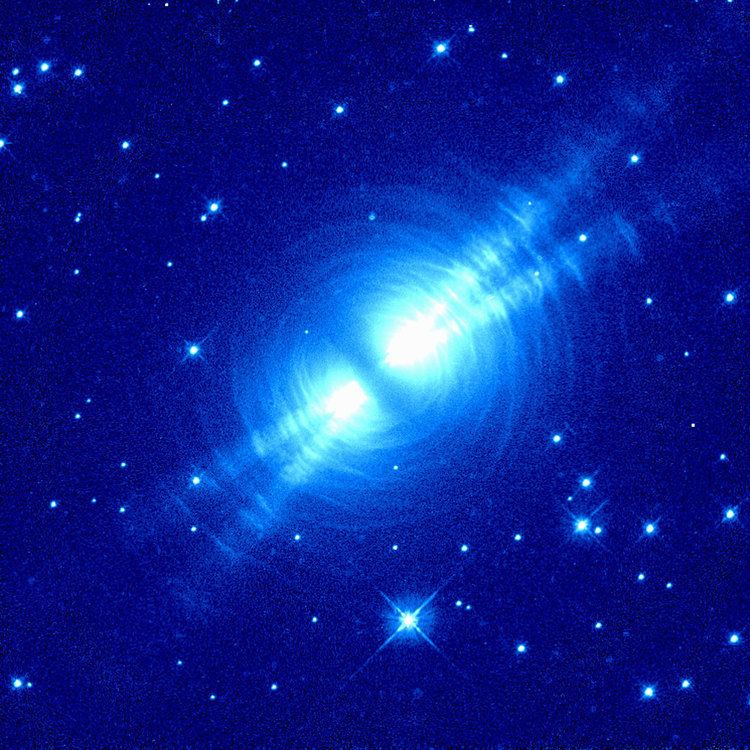
The Egg Nebula emits polarized light which can also be detected visually by a medium-sized telescope.
The rotten egg nebula in m46 deep sky videos
